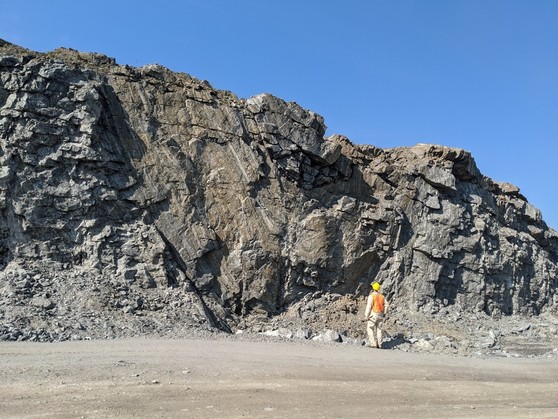New Bedrock Geologic Map Released
The Maine Geological Survey is pleased to announce the publication of a new bedrock geologic map, Bedrock geology of the Lisbon Falls North quadrangle, Maine, by Amber Whittaker, Senior Geologist at the Maine Geological Survey, Dr. David West, a professor at Middlebury College in Vermont, and the late Professor Arthur Hussey (Bowdoin College, emeritus). This is the latest map to be published in association with a multi-year effort to map the bedrock geology in the Lewiston area of south-central Maine.
 The Lisbon Falls North quadrangle, similar to the recently published Monmouth bedrock map to the north, is underlain by two sedimentary rock sequences that were deposited in an ancient ocean basin, the Central Maine Basin, in Silurian time (approximately 420 to 430 million years ago). The Sangerville Formation underlies the western third of the quadrangle, and the Vassalboro Group underlies the remaining area to the east and southeast. They are separated from one another by the pre-metamorphic Messalonskee Lake thrust fault. Both sequences of rock, along with the Messalonskee Lake thrust, were complexly folded and metamorphosed to high-grade due to heat and pressure during the Devonian Acadian orogeny. The northeastern part of the quadrangle hosts a variably deformed Late Silurian-Early Devonian (420 ± 3 Ma) granitic intrusion in Sangerville Formation rocks, and a Late Carboniferous-Early Permian (298 ± 2 Ma) granitic intrusion cuts the Messalonskee Lake thrust in the southern part. Additionally, small granitic pegmatite intrusions, as yet undated, can be found throughout the quadrangle. The map contains unit descriptions, photos of the different rock types, an interpretive cross section, and a summary of nomenclature issues associated with the Vassalboro Group rocks.
Bedrock maps provide a basic information source that can contribute to understanding groundwater quality, groundwater flow and contaminant transport, soil chemistry, distribution of mineral resources, engineering properties relevant to construction projects, and the history of the earth.
 Co-author David West admires a large upright fold in the Sangerville Formation.
|